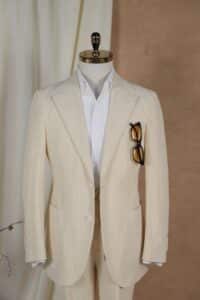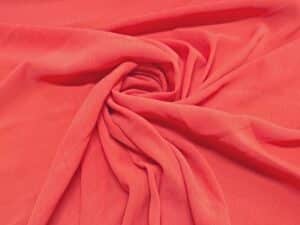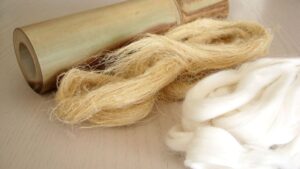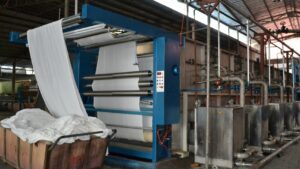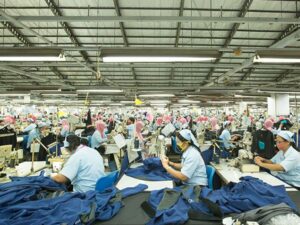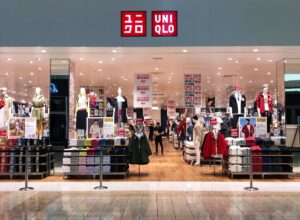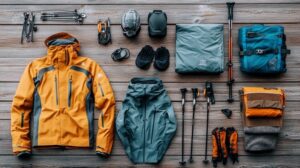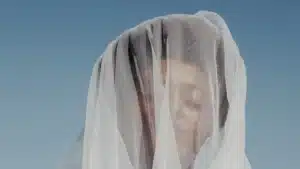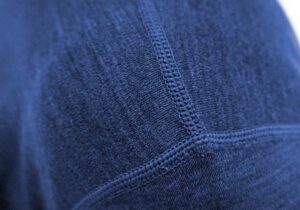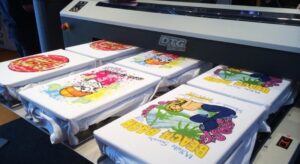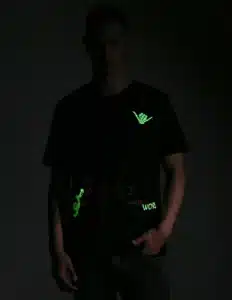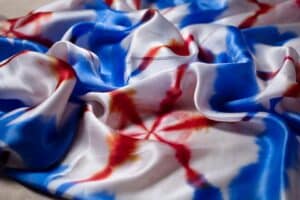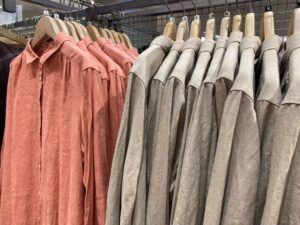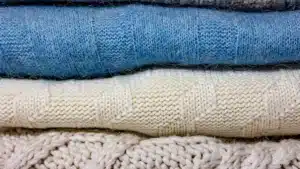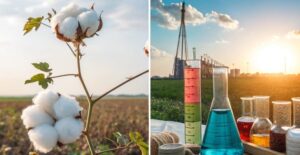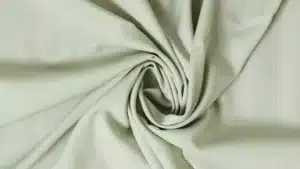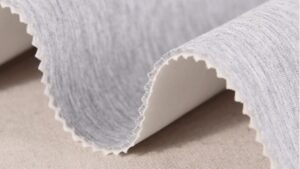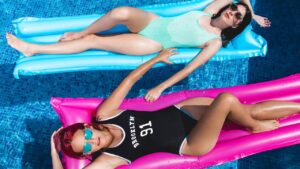
Pongee fabric is light and smooth, perfect for comfort and style. It is made from silk threads and has a slightly bumpy texture. This gives it a mix of casual and classy looks. The fabric is very useful and works well for blouses, dresses, and skirts. It is strong and long-lasting, keeping its quality over time. Pongee does not shrink or stretch, so clothes keep their shape. It is breathable and absorbs moisture, making it great for daily wear or special events.
Key Takeaways
Pongee fabric is lightweight, soft, and strong, perfect for clothes and decor.
Silk pongee feels fancy, while synthetic pongee is tough and cheap.
Pongee fabric lets air through and keeps sweat away, so you stay comfy in any weather.
You can use pongee for many things, like pretty dresses, sturdy umbrellas, and home items.
Taking care of pongee is simple; wash gently and skip high heat to keep it nice.
What Is Pongee Fabric?
Definition and Characteristics
Pongee fabric is light and soft, making it comfy and useful. It is used in clothes, home items, and even industries because it lasts long and feels unique. Its slightly rough surface gives it a mix of casual and fancy looks.
Let’s break down pongee fabric’s key features:
Characteristic | Description |
|---|---|
Types | Semi-stretchy pongee, fully stretchy pongee, matte pongee |
Fabric Composition | Polyester FDY60D/24F for semi-stretchy; polyester DTY75D/72F for fully stretchy and matte pongee |
Weaving Technique | Plain weave for semi-stretchy; 1/2 twill and 1/3 twill for fully stretchy; plain weave for matte |
Weight | About 100 grams per square meter for semi-stretchy pongee |
Applications | Suits, jackets, kids' clothes for semi-stretchy; down jackets, casual jackets for fully stretchy; fall casual jackets for matte pongee |
Color Variants | Light green, yellow, pink, gray, brown, navy blue, earthy yellow |
This table shows the different types of pongee fabric, what they’re made of, and how they’re used. Whether you need semi-stretchy pongee for suits or matte pongee for jackets, this fabric fits many purposes.
Origin and History
Pongee fabric has been around for hundreds of years. It started in China and was originally made from silk. The word "pongee" comes from the Chinese word "本(běn) 机(jī)". Long ago, skilled workers hand-wove pongee, making it special and high-quality.
Over time, pongee began to include man-made materials like polyester. This made it more affordable and useful for many things. Today, pongee comes in silk and mixed versions. Its history, from handmade silk to modern production, shows how it has stayed popular and flexible.
Types of Pongee Fabric

Pongee fabric comes in different types with special uses. You can pick silk, synthetic, or mixed kinds based on your needs. Let’s look at these pongee fabric types closely.
Silk Pongee
Silk pongee is the first and original type. It is made from real silk fibers, making it soft and fancy. This fabric is light and airy, great for clothes like blouses, dresses, and scarves. Silk pongee has a shiny look that makes outfits stylish. It costs more than other types but lasts long and stays classy.
Tip: Choose silk pongee for a mix of comfort and elegance.
Synthetic Pongee (e.g., polyester-based)
Synthetic pongee, usually made from polyester, is cheaper and more useful. It feels smooth and light like silk pongee but is stronger and stretchy. This type is often used for jackets, sportswear, and umbrellas. Synthetic pongee can be treated to resist water, feathers, and static, making it even better.
Synthetic pongee features:
Smooth and shiny surface
Lightweight and strong
Stretchy and tough
Synthetic pongee works well for daily wear and outdoor items.
Blended Pongee Fabrics
Blended pongee mixes silk and synthetic fibers for balance. It combines silk’s softness with polyester’s strength and lower cost. You can use blended pongee for clothes or home items like curtains and furniture covers. Its flexibility makes it a favorite for quality and savings.
Blended pongee often gets special treatments to improve its use. For example, it can dry fast or wick moisture, making it good for activewear and travel gear.
Knowing the types of pongee fabric helps you pick the right one. Whether for fashion, home, or work, there’s a pongee fabric for you.
Features and Advantages of Pongee Fabric
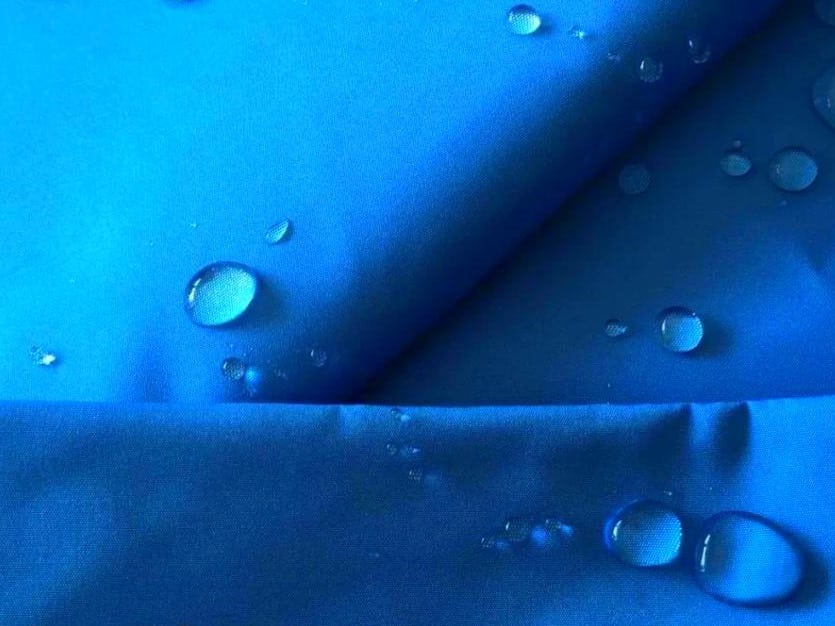
Texture and Smoothness
Pongee fabric is known for being soft and smooth. When you touch it, it feels gentle on your skin. Its special weaving gives it a slightly bumpy but shiny surface. Both silk and synthetic pongee feel fancy and comfortable.
This smooth fabric is great for clothes like shirts and dresses. It slides easily on your skin, keeping you comfy all day. The smoothness also makes outfits look neat and stylish.
Note: Pongee fabric’s smooth texture feels nice and resists wrinkles. Your clothes will stay tidy and fresh.
Durability and Resistance to Wear
Pongee fabric is strong and lasts a long time. It doesn’t wear out easily, so it’s good for daily use. Unlike some fabrics, it won’t shrink or stretch, keeping its shape.
Here are reasons why pongee fabric is durable:
It handles rough use, perfect for outdoor clothes.
It resists mold, staying in good condition for years.
Cleaning is easy; just use water to keep it clean.
Pongee fabric is also water-resistant, adding to its strength. It stays safe from damage even in wet weather.
Lightweight and Breathable Properties
Pongee fabric is light and comfy, great for warm days. It lets air flow through, keeping you cool and dry. Compared to cotton or silk, it handles moisture better and avoids mildew.
Why pongee fabric is breathable:
It pulls sweat away, keeping you comfortable.
Its light weight makes moving around easier.
It dries fast, so you feel fresh all day.
These features make pongee fabric perfect for sportswear and travel gear. Whether hiking or enjoying the sun, pongee keeps you cool and light.
Moisture-Wicking and Quick-Drying Capabilities
Pongee fabric is great at handling sweat and drying fast. These qualities make it perfect for sportswear, travel clothes, and outdoor gear. It pulls sweat away from your skin, keeping you dry and comfy. This helps you stay fresh during tough activities or in humid weather.
Its quick-drying feature makes it very useful. After washing or getting wet, it dries faster than most fabrics. This is helpful when you need your clothes ready quickly. Whether hiking, camping, or facing sudden rain, pongee fabric is a dependable choice.
Another advantage is how it helps with weather protection. By keeping sweat off your skin, it keeps you comfortable in hot or cool weather. This makes it a good option for all seasons. Pongee fabric works well to keep you feeling good, no matter the temperature.
These benefits also apply to home and outdoor items. For instance, pongee fabric in umbrellas or furniture covers dries fast after rain. This stops mold and mildew, making them last longer and stay useful.
Choosing pongee fabric means picking comfort and usefulness. Its ability to wick moisture and dry quickly makes it a smart choice for clothing and home items.
What Is Pongee Fabric Used For?
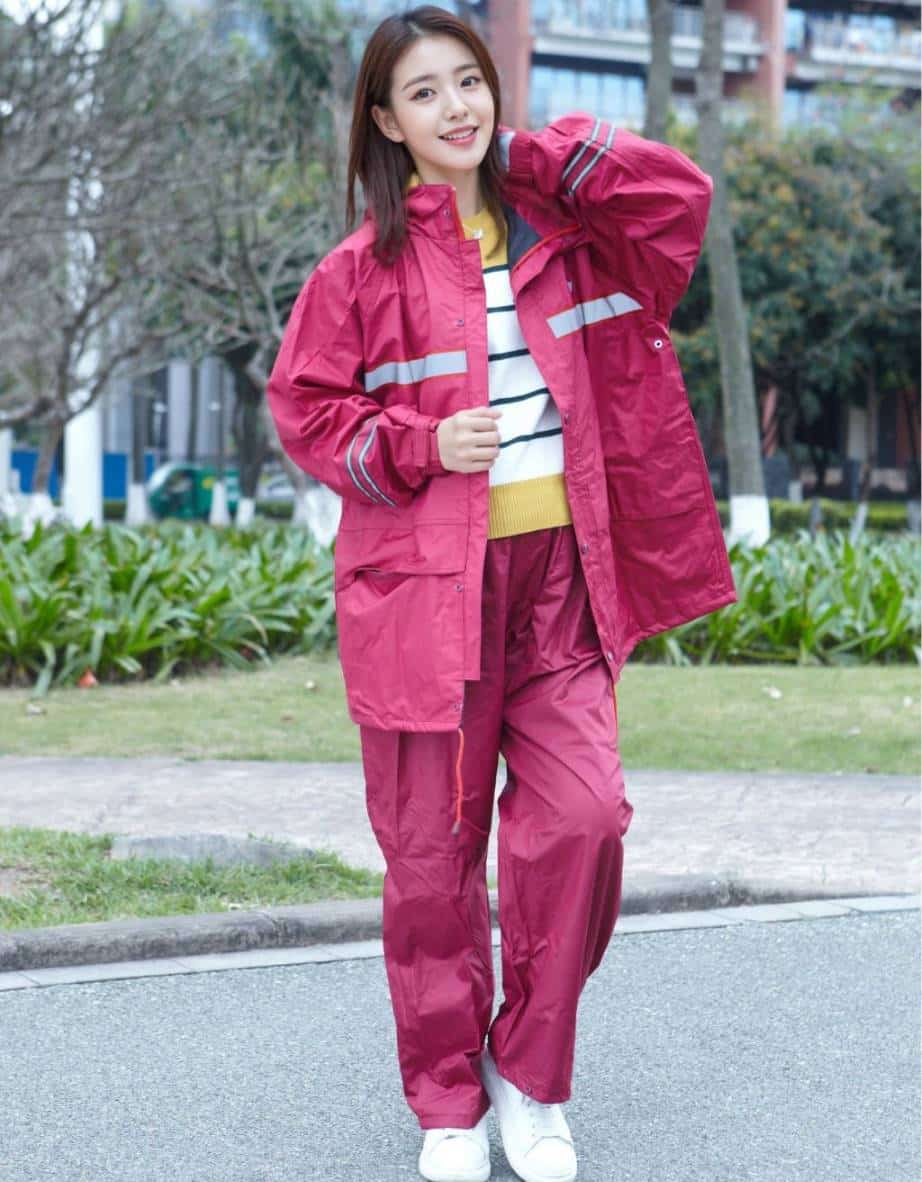
Pongee fabric is useful for many things, like clothes, home items, and industrial products. Its special features make it great for everyday and special uses.
Clothing Applications (e.g., shirts, dresses, linings)
Pongee fabric is often used in clothes because it’s light and breathable. It’s found in shirts, dresses, and skirts, where its smooth feel adds style. It’s also great for linings in jackets and coats. These linings are comfy and don’t make clothes heavy, so they’re good for layering.
This fabric is strong, so your clothes last longer and keep their shape. It doesn’t shrink or stretch, even after washing. Its ability to pull sweat away keeps you dry and comfy on warm days. Whether for work or casual wear, pongee fabric is stylish and practical.
Tip: Use pongee fabric for linings in your clothes. It’s comfy, strong, and keeps your outfits looking great.
Home Decor (e.g., curtains, upholstery)
Pongee fabric is popular for home decor because it looks smooth and lasts long. It’s often used for curtains since it’s light but strong and hangs nicely. Its shiny surface adds a fancy look to any room. It’s also good for furniture covers because it resists damage.
This fabric is water-resistant, making it great for home use. Pongee curtains handle sunlight and moisture well, so they last longer. Furniture covers made from pongee stay clean and dry easily. Its quick-drying feature stops mold, keeping your home fresh and healthy.
Note: Pongee fabric is a smart choice for home decor. It makes your space look nice and lasts a long time.
Industrial Applications (e.g., umbrellas, promotional materials)
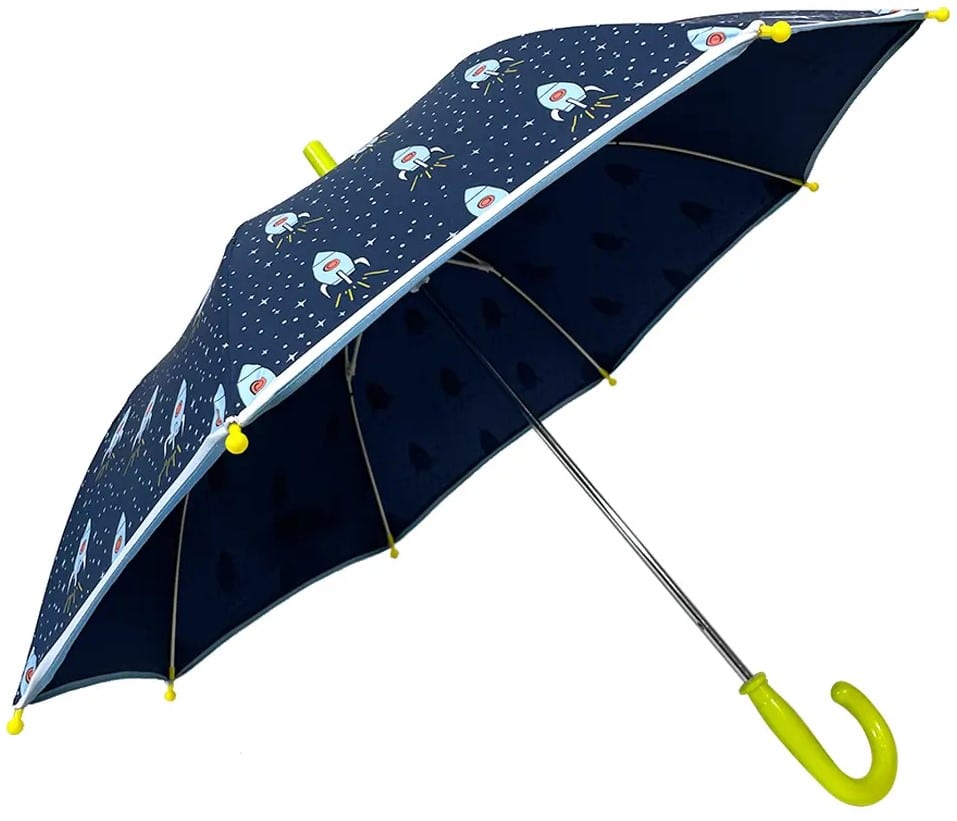
Pongee fabric is strong and handles weather well, so it’s used in many industrial products. It’s a favorite for umbrellas because it resists water and lasts long. It’s also used for banners and flags, where its smooth and shiny look makes them stand out.
Here’s how pongee compares to nylon and polyester taffeta:
Property | Pongee Fabric | Nylon/Polyester Taffeta |
|---|---|---|
Durability | High | Moderate |
Water Resistance | Excellent | Good |
Weight | Heavier | Lighter |
Thread Count | Higher | Lower |
Appearance | Smooth, Luxurious | Standard |
This table shows why pongee is great for umbrellas and banners. Its smooth finish and high thread count make it look better than other fabrics.
Pongee fabric dries fast, which is helpful for outdoor items. After rain, umbrellas or banners dry quickly, so they last longer. Its strength, water resistance, and nice look make it perfect for industrial uses.
Fun Fact: Many top-quality umbrellas use pongee fabric. It’s strong and water-resistant, so it works well in all weather.
Pongee fabric is light, smooth, and very strong. It doesn’t shrink, stretch, or hold moisture, making it useful for many things. You can use it for clothes, home decor, or even industrial items. Need breathable shirts, fancy curtains, or tough umbrellas? Pongee gives you both style and usefulness.
Think about using pongee for your next project. Its special qualities make it a great choice for comfort and quality. Try pongee fabric and see how it works for you!
FAQ
What are the downsides of pongee fabric?
Pongee fabric might not breathe as well as cotton in heat. Synthetic types don’t feel as fancy as silk pongee. Some versions, made with polyester, are less eco-friendly.
Can pongee fabric be used outdoors?
Yes, pongee fabric is great for outdoor gear like umbrellas and coats. It resists water and dries fast, making it good for all weather.
Is pongee fabric pricey?
Silk pongee is more expensive because it’s high-quality. Synthetic pongee is cheaper but still strong and smooth.
How should you care for pongee fabric?
Wash pongee gently with mild soap. Don’t use high heat to dry or iron it. Synthetic pongee dries fast, so it’s easy to clean.
Is pongee fabric good for the environment?
Silk pongee is natural and breaks down over time. Synthetic pongee, made from polyester, isn’t as eco-friendly. Blended pongee offers a mix of sustainability and cost savings.

